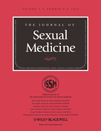A Survey of Erectile Dysfunction in Taiwan: Use of the Erection Hardness Score and Quality of Erection Questionnaire
ABSTRACT
Introduction. There are currently no studies in the Asia-Pacific region using the erection hardness score (EHS) and Quality of Erection Questionnaire (QEQ) to assess erectile dysfunction (ED).
Aims. To provide up-to-date data on the prevalence of ED in Taiwanese men and to validate the EHS and QEQ in this population.
Methods. A representative sample of 1,060 men aged ≥30 years completed a telephone interview. ED status was confirmed via direct questioning and using the abridged five-item version of the 15-item International Index of Erectile Function (IIEF-5). Responses regarding EHS, QEQ, marital and sexual satisfaction, and attitude to treatment were also recorded.
Main Outcome Measures. IIEF, EHS, and QEQ.
Results. The prevalence of ED, as defined by IIEF-5, was 27% among all respondents and 29% among those aged ≥40 years. Although, the prevalence of ED increased with age, men of all ages tended to underestimate their erectile problems. Among men who indicated that they did not have ED, 25% were found to have mild to moderate ED according to the IIEF-5 assessment. An EHS ≤3, indicating the presence of ED, was reported in 26% of men. The EHS was consistent with the QEQ: When the EHS was 4, the satisfaction of each domain of QEQ ranged from 85% to 90%. The QEQ score correlated well with the IIEF-5 score and significantly affected both sexual and marital satisfaction (P < 0.005).
Conclusions. These data indicate that EHS is a simple, practical tool for clinical use. QEQ scores appear to be independently associated with sexual and marital satisfaction, and may be of value in the assessment and monitoring of ED patients. While ED is a common health problem in Taiwan and the prevalence of ED increases with age, affected men lack awareness regarding the presence of erectile problems and the importance of initiating timely and effective treatment. Hwang TIS, Tsai T-F, Lin Y-C, Chiang H-S, and Chang LS. A survey of erectile dysfunction in Taiwan: Use of the erection hardness score and quality of erection questionnaire. J Sex Med 2010;7:2817–2824.




